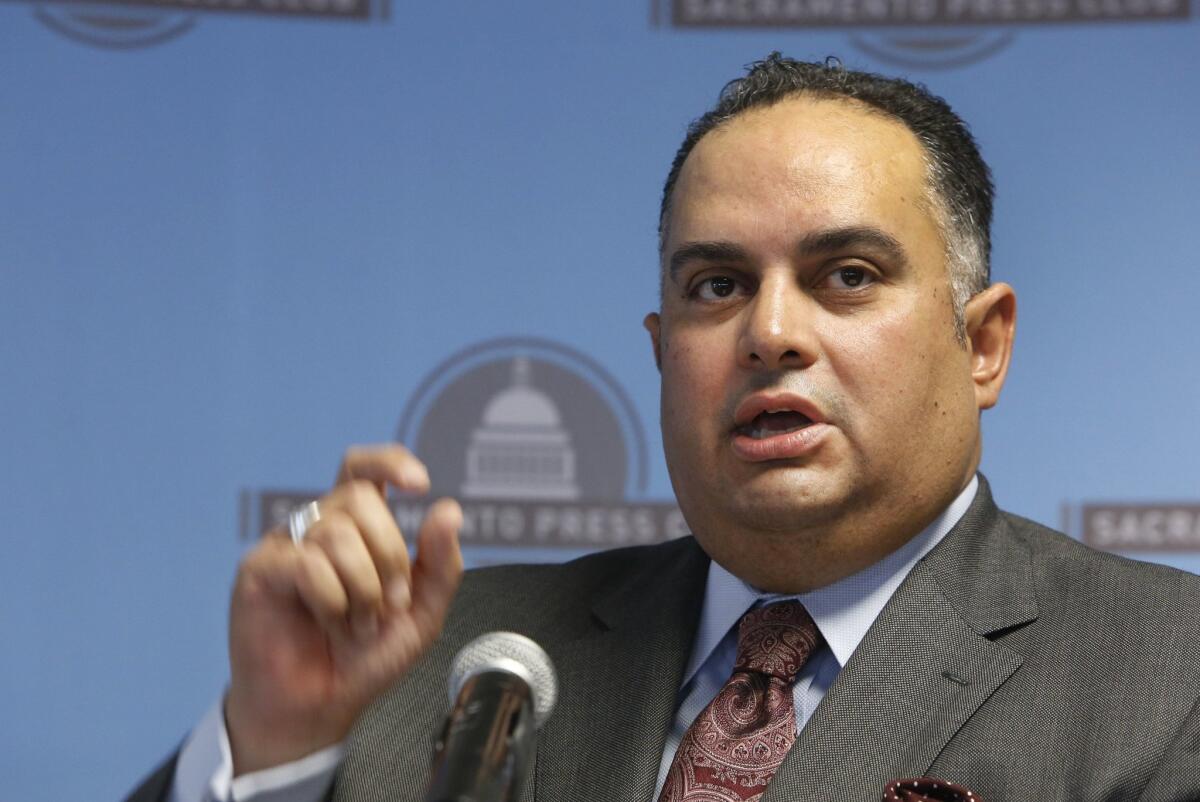Don’t go wild with the budget surplus, Sacramento

Top Assembly Democrats have revealed what they’d like to do with billions of dollars in extra tax revenue that the state is projected to receive, and their top priorities were reassuring: expanding the reserve fund and paying down the debts that Sacramento accumulated over the last decade. Their budget blueprint also calls for a lot of new spending on education and anti-poverty programs, however. If state government really has entered a sustained period of large surpluses, lawmakers can afford to make more long-term investments in California’s infrastructure and its people. But that’s a big if.
Released by Speaker John A. Pérez (D-Los Angeles) and Assembly Budget Chairwoman Nancy Skinner (D-Berkeley), the blueprint is built on the bullish revenue and spending projections that Legislative Analyst Mac Taylor released last month. Taylor expects the state’s slowly improving economy to generate much more in income taxes (particularly capital gains levies) and property taxes over the coming decade than the Brown administration predicted. In fact, Taylor projects that the multibillion-dollar surpluses will continue even after the temporary tax increases that voters approved in 2012 elapse in three to five years.
That’s just a prediction, and lawmakers know all too well how quickly the state’s finances can shift from boom to bust. The blueprint starts by calling for Sacramento to build up $8 billion in reserves — roughly five times the amount in the most recent budget — within three fiscal years. Some of that money would be used to pay debts state government racked up to make ends meet, and some to address unfunded retiree obligations. The rest would go into an expanded rainy-day fund designed to buffer the state against the gyrations in revenue.
SOCAL POLITICS IN 2013: Some rose, some fell -- and L.A. lost its women, almost
The other half of the blueprint would boost spending on higher education and on nutrition, health, job training and other anti-poverty efforts that lawmakers slashed in recent years. Rather than simply restoring funds that had been cut, the blueprint wisely advocates new approaches that could yield a better return on the investment. All the same, it would be premature to make major new commitments before the state’s finances are more certain and its huge unfunded liabilities are reined in. And if we do wind up with more to spend, some portion should go to improving the business climate and growing the economy faster.
The prospect of flush times ahead will tempt Sacramento to repeat the spending binges and ill-advised tax cuts that helped dig a deep fiscal hole just a few years ago. By putting reserves and debt repayment as their first goals, Pérez and Skinner show that they haven’t forgotten what happened to the last surpluses. But before they move on to the rest of the blueprint, they need to be sure that the surpluses are real.
More to Read
A cure for the common opinion
Get thought-provoking perspectives with our weekly newsletter.
You may occasionally receive promotional content from the Los Angeles Times.





